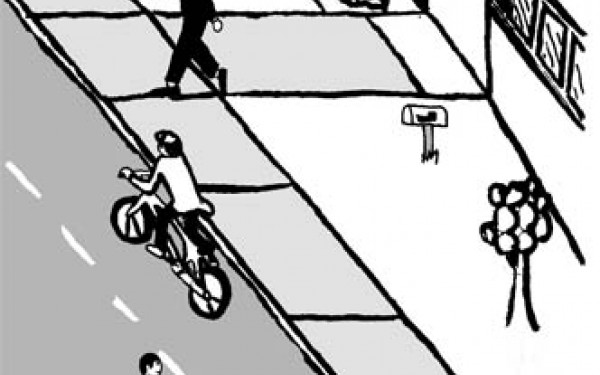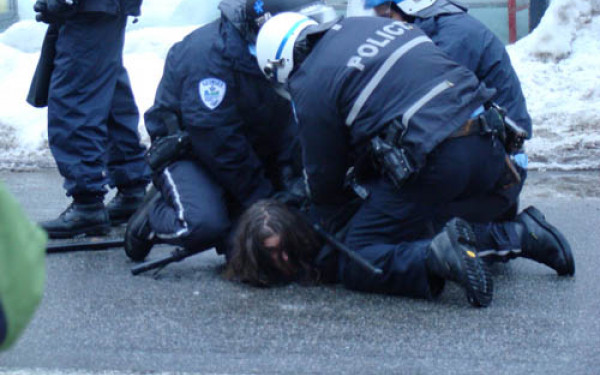Bike Safety Is in the City’s Hands
Infrastructure Is the Answer to Preventable Cyclist Deaths
Last month, a driver allegedly made an illegal U-turn and fatally injured 18 year-old cyclist Clément Ouimet on Camillien-Houde Way.
After the incident, the conversation quickly turned to outrage about infrastructure, and politicians took advantage of the incident to discuss safety measures for that particular section of the road.
In fact, Le Devoir reported that safety recommendations for that area have been made and subsequently dismissed for over 27 years. The path through the mountain has been dangerous for years, and the city has ignored complaints for equally as long.
After Ouimet’s death, Montreal announced interim safety measures for that specific section of Camillien-Houde Way, but it’s not enough. Ouimet is not the only Montrealer to die from a car/bike collision this year, or any other year. The red unilingual signs placed on the mountain lack clarity.
This summer, a CBC article that reported on cyclist deaths in Montreal said that on average, six people are killed while riding their bikes every year. The Gazette obtained records of collisions between cyclists and drivers on the island between 2006 and 2010 and found that there was a total of 3,742 accidents.
I have spoken to a lot of people who put the blame on either the cyclists or the drivers. Often, drivers blame cyclists, and cyclists blame drivers. As someone who does both, this idea of pitting people against each other just doesn’t seem right—and only serves to make the conversation go around in circles.
After I looked deeper into the problem of road safety, I came to the conclusion that these accidents are ultimately the fault of the city’s infrastructure. Of course, there are exceptions to this, but we need a shift in focus. We need to turn this blame game into something more productive.
In the case of Ouimet’s death, the driver has not been officially charged, but there has been a debate surrounding the consequences of such a fatal mistake. The driver allegedly conducted an illegal U-turn, but does the conversation change if it had been a legal turn? What about the 61-year old biker who died this summer after being hit by a school bus? The school bus had been driving through a green light. What about the 41-year old cyclist who was killed by a dump truck? Police believe the cyclist was in the truck’s large blind spot. If we turn drivers and cyclists into enemies on the road, we ignore the real issues.
Jason Savard is the leader of the Vélo NDG Bike Plan Team and he said the city needs to make larger improvements to its infrastructure in order to prevent future accidents. Savard, a bicyclist and a driver, said that we should not demonize drivers.
“Many of us will do some U-turns, some will take some excess speed sometimes,” he said. “But if you are not allowed to do it because of the way the streets are built, it will inhibit these actions.”It can’t be ignored that cyclists play a role in collisions. Some accidents occur after cyclists choose not to use the bike paths that are already in place, and this can, of course, be dangerous. It can also be frustrating for drivers that have to dodge cyclists when they know there are safer routes setup for them. However, the bike paths can be limiting in location and in the inability to pass slower bikers (like tourists trying Bixis for the first time). As a driver, I get frustrated when cyclists don’t use the bike paths, but as a cyclist, I understand why the paths are not always the best option.
Gabrielle Anctil, spokesperson for Ghost Bikes Montreal, explained that “When someone chooses to not use an infrastructure that is supposedly designed for them, it kind of speaks to the fact that the infrastructure doesn’t really answer to what their needs are.”
Anctil said Montreal isn’t built to make sure that the most vulnerable people are safe. “If an individual cyclist chooses to not be on the bike path and then they get ‘doored’ by a driver, it’s kind of both people’s fault. If you open your car door without looking—that’s wrong, that’s something you shouldn’t have done. But then there’s the cyclist, they chose to put themselves in more danger—but in both cases no one is a bad person,” she said.
Cyclist safety is a complicated problem with an even more complicated solution. Taking small interim measures—like the ones announced in response to Ouimet’s death—are not enough. The city needs to do something tangible and permanent about the issue of cyclist safety. Safety measures need to be developed in order to prevent more collisions from happening, not only in response to when these collisions turn fatal.
We should not pit drivers and cyclists against each other because ultimately it is the city that has to fix the problem. Every cyclist death is a preventable death so let’s make sure to hold these politicians accountable to their promises of action.

_900_600_90.jpg)
_600_832_s.png)


1_600_375_90_s_c1.jpg)

